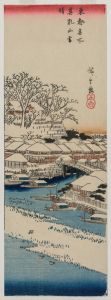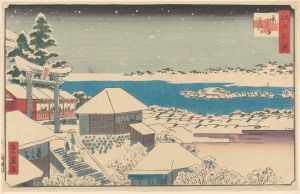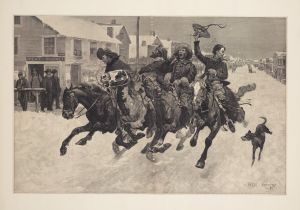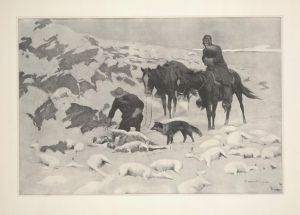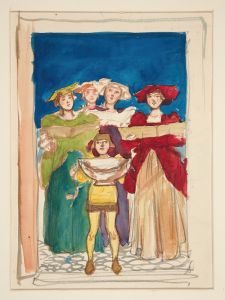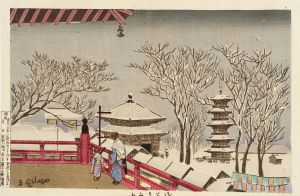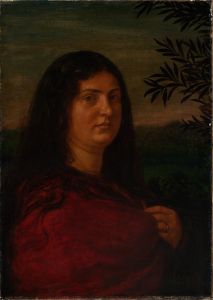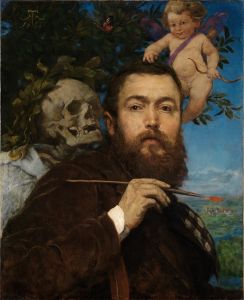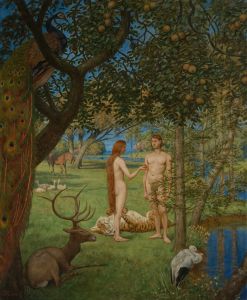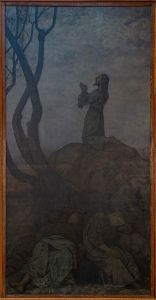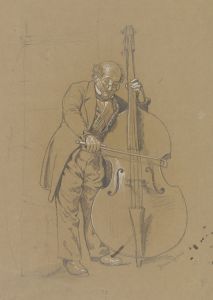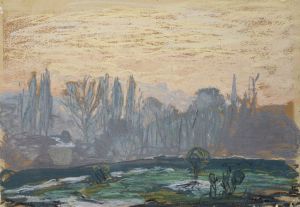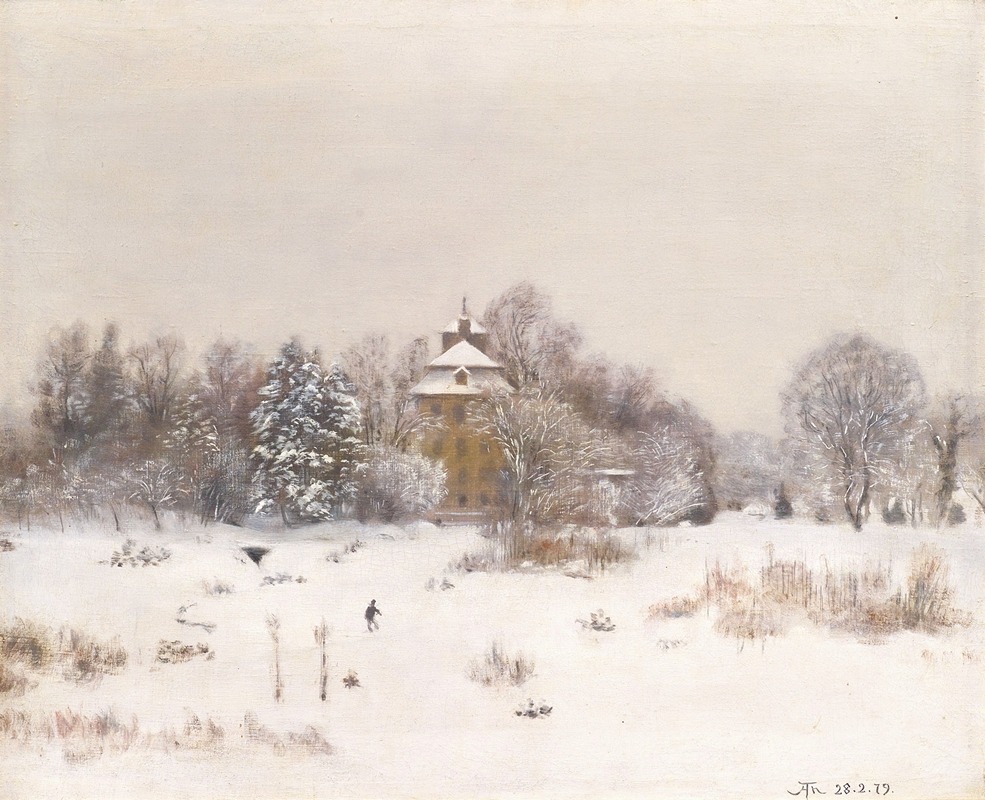
Die ‘Oede’ bei Frankfurt im Winter
A hand-painted replica of Hans Thoma’s masterpiece Die ‘Oede’ bei Frankfurt im Winter, meticulously crafted by professional artists to capture the true essence of the original. Each piece is created with museum-quality canvas and rare mineral pigments, carefully painted by experienced artists with delicate brushstrokes and rich, layered colors to perfectly recreate the texture of the original artwork. Unlike machine-printed reproductions, this hand-painted version brings the painting to life, infused with the artist’s emotions and skill in every stroke. Whether for personal collection or home decoration, it instantly elevates the artistic atmosphere of any space.
Hans Thoma's painting Die ‘Oede’ bei Frankfurt im Winter (translated as The 'Wasteland' near Frankfurt in Winter) is a work by the German painter Hans Thoma (1839–1924), a prominent figure in 19th-century German art. Thoma is known for his landscapes, portraits, and genre scenes, often characterized by a blend of realism and romanticism. His works frequently depict the natural beauty of his native Germany, with a particular focus on rural and pastoral settings.
This painting, as the title suggests, portrays a winter scene near Frankfurt, Germany. The term "Oede" in the title can be translated as "wasteland" or "desolate area," suggesting a barren or uninhabited landscape. The artwork captures the quiet, subdued atmosphere of winter, with muted tones and a focus on the stark beauty of nature during the colder months. Thoma's attention to detail and his ability to evoke mood through his use of color and composition are evident in this piece.
Hans Thoma was influenced by the Romantic movement as well as by the works of earlier German painters such as Albrecht Dürer. His landscapes often reflect a deep connection to the natural world, and his style bridges the gap between Romanticism and the emerging realism of the late 19th century. While Thoma's work was not always appreciated during his early career, he later gained recognition and became a celebrated figure in German art. He served as the director of the Karlsruhe Academy of Fine Arts and was honored with numerous awards during his lifetime.
Specific details about the creation date, dimensions, and current location of Die ‘Oede’ bei Frankfurt im Winter are not readily available in public records. However, the painting is consistent with Thoma's broader body of work, which often explores themes of nature, solitude, and the changing seasons. His ability to capture the essence of a landscape and imbue it with emotional resonance has made his paintings enduringly popular.
As with many of Thoma's works, this painting reflects his deep appreciation for the German countryside and his skill in portraying the interplay between light, shadow, and texture. It stands as a testament to his artistic vision and his contribution to 19th-century German art.





